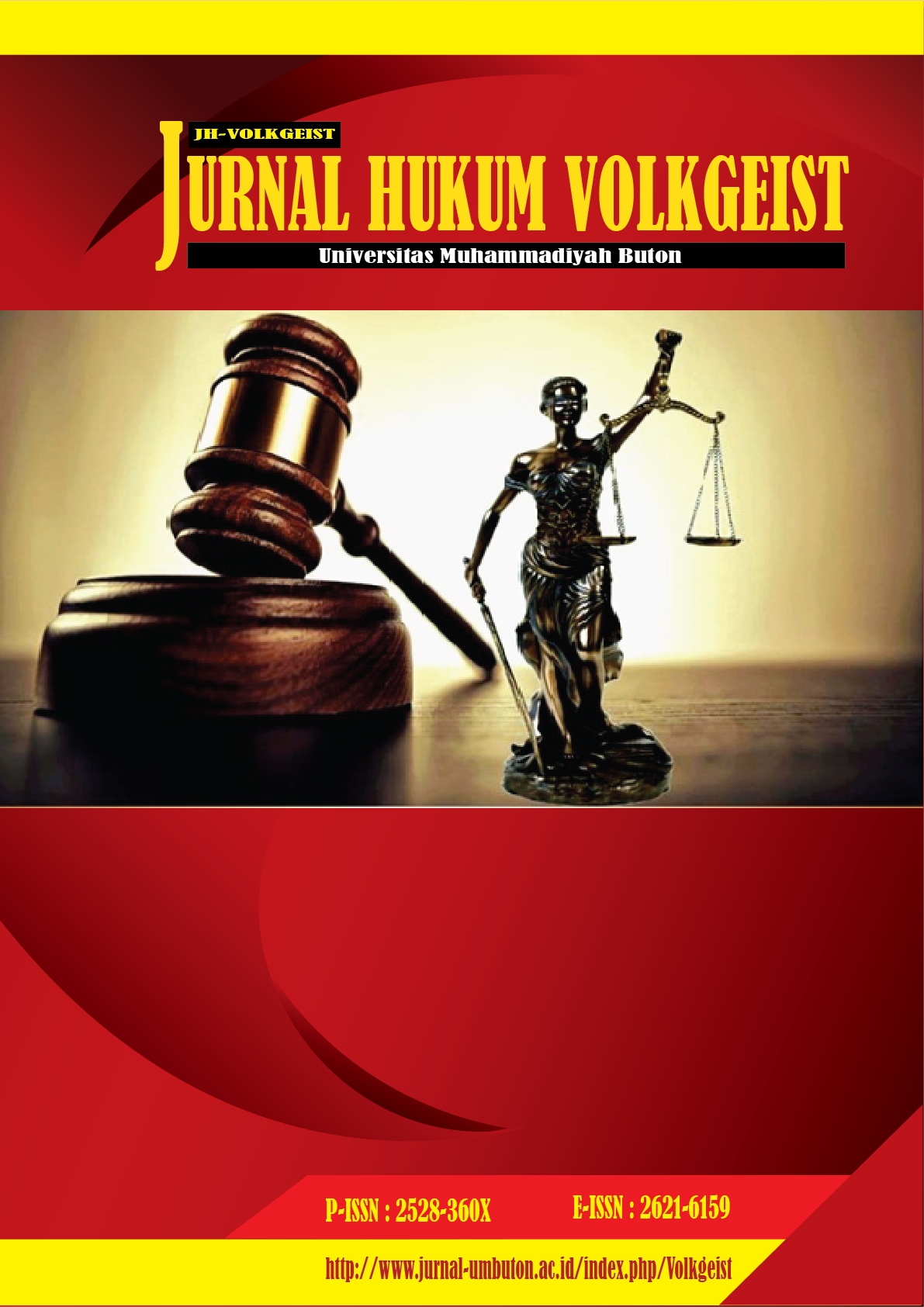Soil Exploitation and Environmental Impacts of Brick Making in Wasur 2 Merauke Regency
DOI:
https://doi.org/10.35326/volkgeist.v6i1.1537Keywords:
Soil Exploitation, Environmental Impact, BricksAbstract
Merauke Regency is a coastal area with muddy soil conditions. sand and gravel materials, because of these conditions the community and housing business actors use red bricks as material for development in Merauke district which is currently being carried out in all sectors of life, especially building and housing construction.
This research was conducted to determine the process of mining soil for the brick-making process and the impact of mining on the surrounding physical environment. How is the environmental permit granted by the Government for the exploitation of brick-making land and how is the Merauke Regency Government's supervision of mining. From the results of this study, it can be concluded that, the brick mining process carried out by brick craftsmen in Wasur 2 does not have a production permit from the relevant Government Agencies and there is no environmental study from the Merauke Regency Environmental Agency and there is no regular supervision from the Government. and the Environment Agency of Merauke Regency so that land exploitation activities are still ongoing which will have an impact on soil degradation and environmental damage and can cause a decrease in the function of top soil which is rich in nutrients as a function of land cover vegetation which can change the structure of the soil and the area. will become increasingly dry and unproductive.
Downloads
Downloads
Submitted
Accepted
Published
Issue
Section
License
- Author retains the copyright and grants Jurnal Hukum Volkgeist the right of first publication of the work simultaneously licensed under the Creative Commons Attribution-ShareAlike 4.0 License that allows others to share the work with an acknowledgment of the work's authorship and initial publication in this journal
- The author is able to enter into separate, additional contractual arrangements for the non-exclusive distribution of the journal's published version of the work (e.g., post it to an institutional repository or publish it in a book) with the acknowledgment of its initial publication in this journal.
- The author is permitted and encouraged to post his/her work online (e.g., in institutional repositories or on their website) prior to and during the submission process, as it can lead to productive exchanges, as well as earlier and greater citation of the published work (See The Effect of Open Access).









.png)































